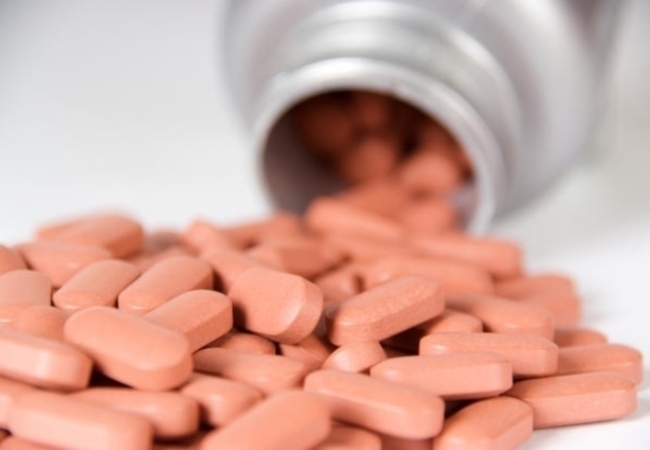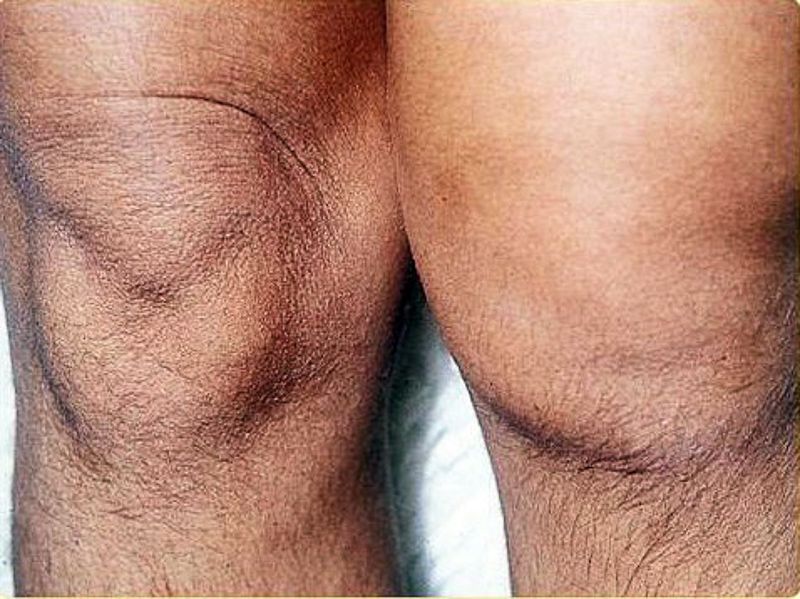Reactive arthritis (ReA) is a rare form of arthritis that primarily targets the ankle and feet joints and can also inflame eyes, intestines, skin and urinary tract. It is triggered by an infection in another body part (cross-reactivity). It was formerly known as Reiter’s syndrome which caused inflammation of joints (arthritis), eyes (conjunctivitis) and urethra (urethritis).
This condition is considered an autoimmune disease of spondyloarthritis group. In most of the cases, the signs and symptoms come and go and eventually disappear within a year. The various symptoms seen in different body organs, which may or may not appear at the same time, help in identification of the disease. It may come on quickly and severely or more slowly, with sudden recurrences or remissions. This arthritis often does not develop until once the infection is successfully treated.
Here are the causes, risk factors, symptoms, diagnosis and treatment of reactive arthritis.
Cause Of Reactive Arthritis

As reactive arthritis is developed as a body’s reaction to an infection, it may be difficult to know the exact cause. And if the triggering infection causes mild symptoms or none at all, you might not become aware of that.
The most common bacteria (sexually transmitted or foodborne) causing reactive arthritis include clostridium difficile, chlamydia, yersinia, salmonella, campylobacter and shigella. This arthritis is not contagious but the bacteria can be transmitted sexually or in contaminated food. And only a few people exposed to these bacteria develop this arthritis.
Risk Factors
-
Hereditary factors: The genetics may be a risk factor in development of reactive arthritis. The people having HLA B27 gene are at a higher risk of having this condition. However, people not having the gene may also have it.
-
Gender & age: It is more likely to affect men than women from age 20 to 40 and especially those having HIV (human immunodeficiency virus) are at a higher risk. Men also tend to experience more severe joint pain as compared to women.
Signs & Symptoms

In reactive arthritis, the onset of signs and symptoms takes place usually 1-4 weeks after the exposure to a triggering bacterial infection. The three different sets of symptoms associated with this type of arthritis include:
- Eyes and skin
The eye inflammation a major symptom of reactive arthritis. It may also involve your skin and mouth. Conjunctivitis (pink eye) is the inflammation of the eye membranes and the symptoms are pain, itching, and discharge.
Skin rashes including keratoma blennorrhagica may also take place. Mouth sores are less common but may happen along with other symptoms of reactive arthritis.
- Musculoskeletal system
Musculoskeletal symptoms such as joint pain and swelling occur in reactive arthritis. Mostly, the joints in your knees, ankles, and the sacroiliac joints of your pelvis are affected. Joint pain, tightness, and swelling in your fingers, back, buttocks, or heels (Achilles tendon area) may also be experienced.
- Urinary system
Urethritis is a condition causing the urinary symptoms. The urethra is the tube carrying the urine from bladder to outside of body. The inflammation of urethra is urethritis. The symptoms include pain or burning at the time of urination or frequent urge to urinate.
The men may develop prostatitis (inflammation of prostate gland) and women may have cervicitis (inflammation of cervix).
Diagnosis

At the time of physical examination, your doctor may check your joints for signs and symptoms like swelling, tenderness, warmth and range of motion in affected joints. The doctor may also check skin for rashes and eyes for inflammation.
1. Blood tests
Your blood sample may be required for tests such as signs of inflammation, antibodies linked to other types of arthritis, genetic marker linked to ReA, signs of inflammation and evidence of past or current infection.
2. Joint fluid tests
A fluid sample from the affected joint may be needed by doctor to test it for checking:
-
If bacterial infection is present. It may indicate septic (infectious) arthritis that can lead to severe joint damage.
-
If white blood cell (WBC) count has increased. It may indicate infection or inflammation.
-
If uric acid crystals is present. It may indicate gout which is a very painful type of arthritis often affecting the big toe.
3. Imaging tests
The X-rays of your lower back, joints and pelvis can help in identifying any of the signs of reactive arthritis. X-rays also help in ruling out other forms of arthritis.
Treatment of ReA

The ReA treatment is about management of symptoms and treatment of an existing infection.
- Medications
If a bacterial arthritis triggers your reactive arthritis an an evidence of persistent infection is found, the doctor may prescribe an antibiotic. The kind of antibiotic you will be recommended depends on the existing bacteria.
The doctor may prescribe NSAIDs (Nonsteroidal anti-inflammatory drugs) for relieving pain and inflammation in reactive arthritis. A corticosteroid injection administered into the affected joint can help in reducing inflammation thereby helping to et back to normal activity level.
The topical steroids might be used for skin rashes and some suggest that even rheumatoid arthritis (RA) drugs relieve pain and stiffness in those having reactive arthritis.
- Physical therapy
A physical therapist can assist and tell about the targeted exercises for muscles as well as joints. The strengthening exercises help in development of muscles surrounding the affected joints thereby increasing the support of joints. The range of motion exercises increase the flexibility of joints and reduce the stiffness.
Image Source:
1. arthritis
2. staticserver2
3. medicalnewstoday
4. findarthritistreatment

